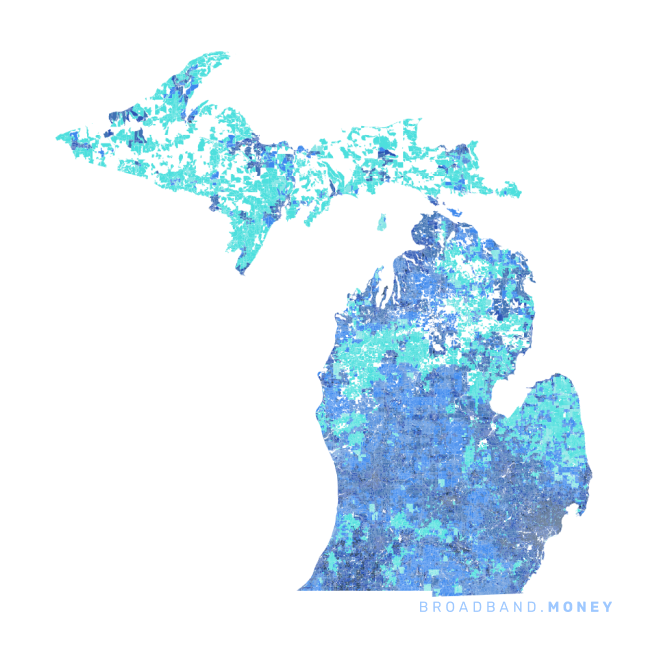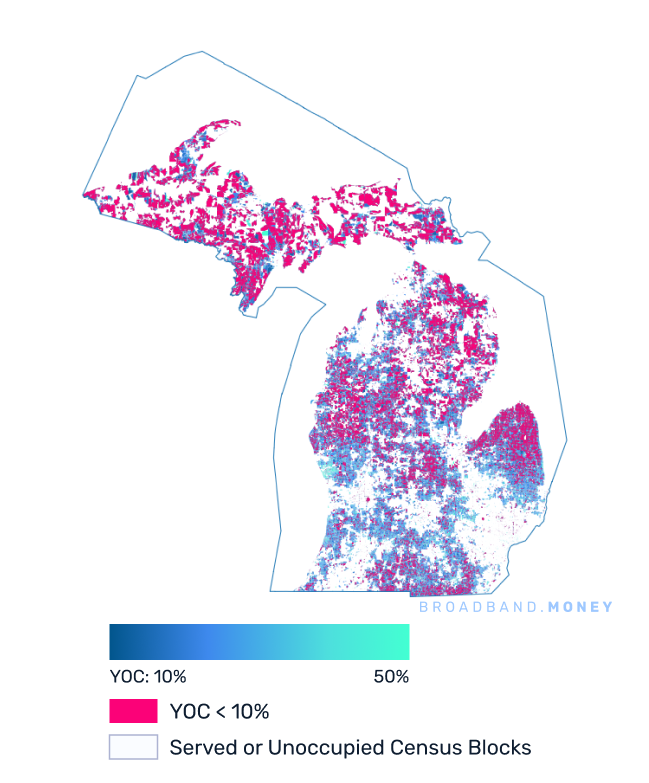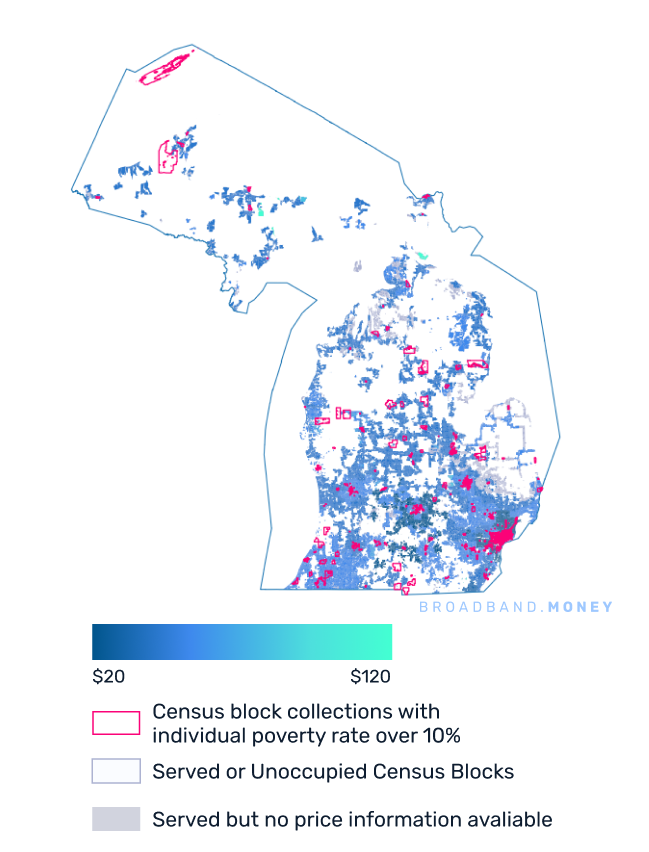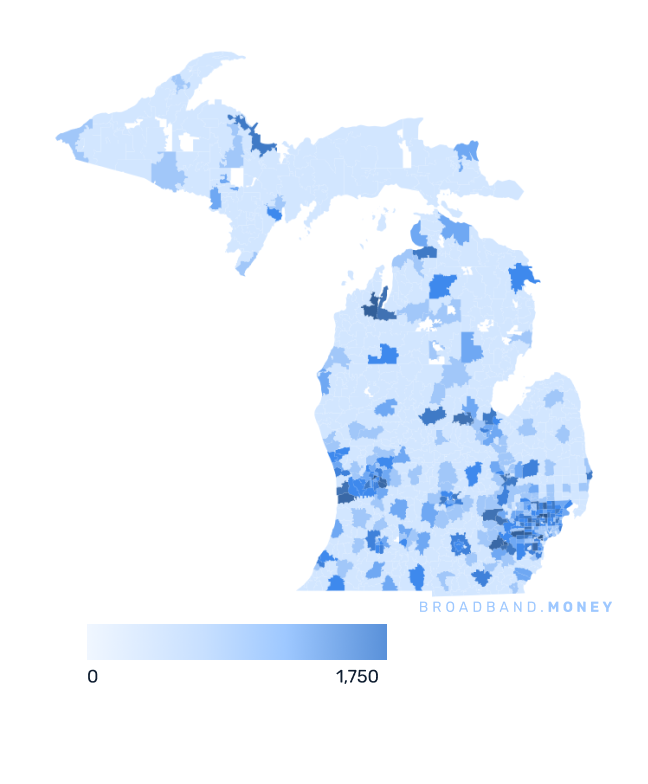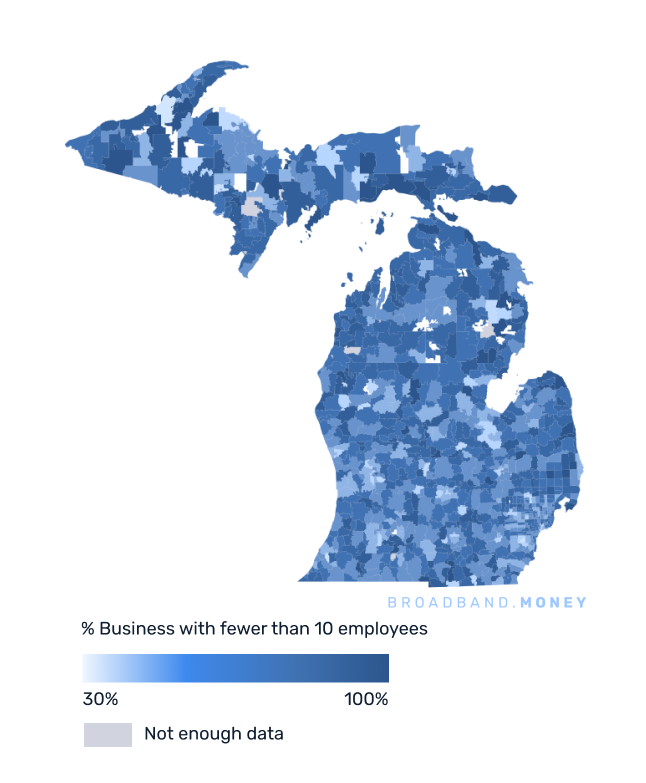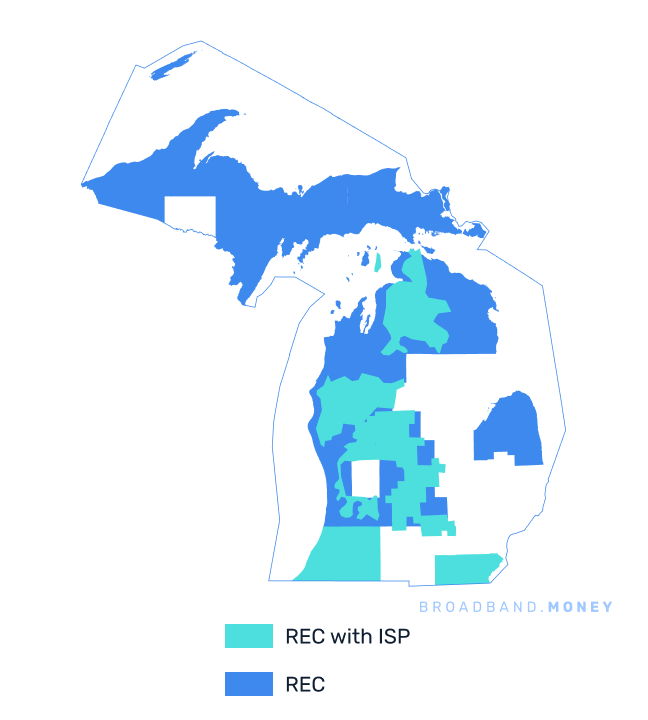Meet Eric Frederick, MI
May 08, 2025
Michigan Wishes the NTIA would ‘Say YES’ to Moving Forward Note: I was born in Michigan and visited grandparents for Thanksgivings and Lions games and spent summers in the northern part of the mitten state! Eric Frederick, the Chief Connectivity Officer for the Michigan High-Speed Internet Office (MIHI), was in a lot better mood the last time I spoke with him in 2024. Knee deep in the BEAD ‘process,’ he was confident and optimistic. I joke with him that, today, it seems that the weight of the BEAD world might have crushed his spirit. He laughs and says that isn’t the case. He is simply frustrated. Like so many other state broadband leaders he finds himself in limbo, hoping to get some answers, whatever they are, soon… but we will get to that. Not So Fast My Friend Frederick spearheaded the opening of MIHI in 2022 with the goal of ‘Leveraging Technology to Improve Quality of Life of Michiganders.’ Today, his staff of 15 has accomplished a great deal in connecting the unconnected in Michigan. We chatted for broadband.io last week to catch up. When we spoke in 2024, Frederick was very open in the fact that he was ‘slow walking’ Volume 2 to be able to leverage his 365 days so that it was approved around the same time challenge results were final. He wanted to give his office as much of the 365 days as possible to implement the grant rounds phase as they could not begin until challenges were over and all BSLs were defined.Volume 2 was approved at the end of August with challenge results scheduled to be finalized within 30-45 days of approval. The challenge process was completed in late July and Frederick’s plan seemed to be on track so Michigan could move right into subgrantee selection. Sadly, for Frederick, when men plan, bureaucrats (or is it God?) laugh. About a week before challenge results were to be finalized and all BSLs defined so that Michigan could open its subgrantee selection, an RDOF provider in Michigan defaulted and the challenge process would take until late December to incorporate 38K additional BEAD eligible locations. Michigan had to pause their subgrantee selection process for three months and wait for the RDOF provider to supply the state with the defaulted locations. That’s 3 months lost because a carrier not only defaulted but took too long to report which BSLs were back in the mix. This brought the total BSLs Michigan’s BEAD would need to connect to 248K. Frederick notes that this is the third highest in the country for a state that received the fourth highest funding allocation.You Can’t Hurry Love BEADMichigan was able to open its grant portal in early January. “We opened subgrantee selection because we've just been waiting and waiting and waiting so everything was primed and ready,” says Frederick. “Because we had already done the prep work, we were able to move quickly in a subgrantee selection… but that three months of waiting just ate into our timeline.” “We got a good response in that 193K of our 248K eligible addresses were bid, with fiber,” says Frederick. “Fortunately, the defaults were high density areas, so fiber was and is feasible.” Currently the MIHI team is in the thick of scoring and deconflicting project applications that overlap each other. Michigan’s project areas were hexagons, 1.5 miles across. Without getting into the minutia of it, Frederick says that shaping project areas this way made it easier for applicants, yet harder on his team to deconflict. As for where, geographically, the unserved and underserved can mostly be found in Michigan, Frederick says the Lower Peninsula (the mitten and bulk of the state), especially the southern half, has the highest concentration of BEAD eligible locations. Michigan’s scoring rubrics award extra points for scalability and resiliency. These include preferencing buried fiber over aerial due to frequent ice storms, redundant paths so neighborhoods are not stranded offline from a single incident and partnering with 4G LTE providers to deliver coverage where needed. “There’s a good mix of applicants in round one,” reports Frederick. “There's 33 companies of all sizes and types, many poised to be awarded grants… hopefully sooner than later.”Ain’t No Mountain High Enough: On to Round TwoAssuming that after deconfliction round one covers ~193K, this leaves approximately 55K for negotiations and then round two to reach BSLs with “all other” technologies. “After we are done deconflicting round one, we may find some BSLs that need to be served are close to awarded project areas,” explains Frederick. “We’ll approach these recipients and negotiate their ability to reach them.” Frederick reports that, unsurprisingly, the places that didn’t appear in round one of applications are in the most rural parts of the state, including the middle of the Upper Peninsula and large swaths of Michigan’s National and State Forests.If NTIA feedback comes sooner than later, round two should start in June when scoring for round is complete. The second round, like the previous, should happen quickly given that Michigan preregistration is already complete. Frederick expects wireless, satellite, and hybrid connectivity to dominate round two applications. “Stop! In the Name of Love Elon?”It is at this point in the conversation that we get to the new administration’s delays and Frederick’s frustrations. He says he is somewhere in the middle of “the sky is falling” and “remain calm, all is well.” He is hopeful that Michigan will be able to “implement BEAD in the way we had wanted and planned to do.” At the same time, he laments that “the NTIA has been very quiet…” and “…as far as guidance it’s been radio silence. Nothing.” Pragmatically, Frederick points out that MIHI still has a law (BEAD) to implement and an approved plan to implement. “Like many states, we're moving forward as quickly as we can. We want to move quickly because Michiganders have been disconnected too long already, but current NTIA rules slow grant announcements and uncertainty is causing hesitation.”Author’s Note: With a 90-day delay, what happened to the Speed for BEAD proposed legislation?“States are in the driver's seat to move quickly, and we want to move quickly,” says Frederick. “We we know that the new administration has its priorities, but we’ve sent along our own recommendations.” Frederick says the suggestions they have sent that could speed things along include: Accept the results of completed subgrantee rounds rather than requiring states to re-do applications and scoring. States can modify grant agreements to get rid of language not aligned with the new administration. Anything perceived as heavy-handed by the Biden administration can be stripped out, says Frederick, “Let's get grant agreements done and keep the train moving.”For the applications that did not overlap with other applications and met the minimum scoring criteria. If these applicants were screened and qualified, these projects should be allowed to go forward and funded. Currently no one can move forward with grant agreements without NTIA signoff.Release funds for approved projects so we can “get shovels in the dirt while we're running our round two, but currently I can't do that,” laments Frederick.What’s Going On?“Every day we're waiting, we are wasting money and time,” says Frederick. “And all the subgrantees and winners are getting madder and madder. We’re so close and the new administration could claim success for the program (and speeding it up) if they would just let us get going. ALL the providers that applied for our program want us to move forward!” With rumors swirling, Frederick questions the wisdom of allocating more funding to satellite internet services. “We want to invest in technologies that solve our connectivity problems not only for tomorrow, but 30 years from now. “If we rely on satellite, we are going to be in the same place 10 years from now.” Beyond the lack of satellites currently available to deliver connectivity, Frederick dives into the math, telling me that satellites must be replaced every five years, making the long-term cost of satellite is for the most part, significantly more expensive than fiber networks over time. And for consumers, subscription to satellite internet service can be 3 that of traditional carriers. Frederick says that Michigan’s cost of less than $15K per passing means that while there are a few high outliers, the most affordable means to reach most locations is fiber and wireless. Rockin’ ROBINMichigan’s CPF allocation was placed in the state’s ROBIN (Realizing Opportunity with Broadband Infrastructure Networks) program. Fourteen recipients amid 32 projects, funded with $238 million. To-date, more than 25% of the 72K that will be connected have service. With ROBIN and BEAD projects accounting for approximately 320 thousand BSLs, Michigan is tackling head-on some obvious hurdles that will pop up along the way. “We're proposing $60 million to support workforce development with a big deal being preparing workers to be ready to work on deploying fiber projects.” https://www.michigan.gov/leo/-/media/Project/Websites/leo/Documents/LEO-Initiatives/Build-Michigan-Infrastructure-Workforce/Michigan-Statewide-Infrastructure-Workforce-Plan.pdf And as far as ensuring the pending robust internet networks are used, Frederick says Michigan is deploying training and education programs. “It's our job to educate – inform people why they need better internet… and how to do it.” Lose Yourself (in Politics) As we wrap, I circle back with Eric to take a temperature on his morale. “I am always optimistic, but I would be lying if I said pessimism doesn’t occasionally creep in when we don't know what's going to happen beyond rumors and speculation. But I still think BEAD is going to be a success. I still think we're going to be connecting hundreds of thousands of people through the program.”At the beginning of this process we went on a statewide listening tour, visiting more than 40 communities from one end of the state to the other. Frederick recalls telling communities, “We're going to be able to do this and we're going to be able to build fiber to places that have never had a decent connection. We told them that they would have access to technology that other places already have.”Frederick continues, “If I'm just throwing a satellite dish to a quarter million households and calling it a day, that's, that's not what we promised to do and that's not what the BEAD program was intended to do.” Eric lives in Holland with his wife and two kids, an eighth grader and a fourth grader. Each seems to be taking up what’s left of Eric’s time with their extracurricular activities. While neither is in the horrific time suck of little league baseball, track meets, and swim meets are no joke.



